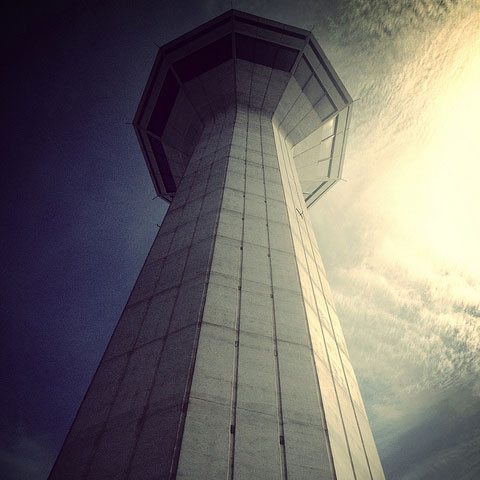
July 9, 2017; Politico
NPQ regularly addresses the pros and cons (mostly cons) of government privatization in general, and in particular with education reform, public health systems, public works such as the water supply, prisons (and here), foster care, the management of public lands, and even the privatization of democracy through philanthropy.
President Trump’s infrastructure vision (once costing $1 trillion, now $200 billion with details still forthcoming) includes the privatization of the nation’s air traffic control system, as explained in this White House press release in early June. It is a decades-old idea to detach the job of tracking and guiding airplanes from the control of the Federal Aviation Administration (FAA) and fund it by user fees instead of taxpayer dollars. Most of the commercial airlines support the idea, and executives from those companies joined the president at the White House to announce the plan.
House Committee on Transportation and Infrastructure chairman Bill Shuster (Republican of Pennsylvania and an early Trump supporter) champions the proposed legislation which he put forward early last year. The Aviation Innovation, Reform, and Reauthorization Act of 2016 proposed that a private nonprofit corporation be created to operate, manage, and control air traffic control nationwide. The FAA would retain some oversight capacity, but mostly representatives of the major airlines would constitute this new organization’s board. Air traffic controllers would remain unionized (and the union supports the proposal). Shuster’s bill never made it to the House floor last year, indicating that even some Republicans are not yet sold on the idea.
Britain, Canada, France (they went on strike last March), and Germany are among the countries that have already transferred their air traffic control systems to private entities or independent agencies.
Writing for Politico, Brianna Gurciullo and Lauren Gardner bring us up to date on the progress this legislation is making in the U.S. and the threats that remain to this proposal becoming law.
Sign up for our free newsletters
Subscribe to NPQ's newsletters to have our top stories delivered directly to your inbox.
By signing up, you agree to our privacy policy and terms of use, and to receive messages from NPQ and our partners.
A month after Trump offered his public support in a White House speech, the proposal to split up the Federal Aviation Administration still faces opposition from rural interests, small-plane owners and key Republicans in Congress, where the to-do list for returning lawmakers is piled high with big tasks like repealing Obamacare and rewriting the tax code.
One crucial lawmaker says he’s not even sure how strongly Trump supports the proposal, which would represent the most dramatic overhaul of U.S. aviation in a century.
“Well, you know, the president—it’s kind of funny because he hasn’t mentioned that to me, and I’m the one that he would mention it to, and I’ve been around him a lot,” said Sen. Jim Inhofe (R-OK), who, as a pilot, staunch conservative, and advocate for rural communities, would be an important voice in the debate. “So I just question the depth of his commitment to that cause, to that legislation.”
In any event, it will take much more than President Trump’s endorsement to pass this legislation. Gurciullo and Gardner offer a thorough analysis of who is for and against the bill and for what reasons. In general, most Republicans and the major airlines are for the proposal, and the airlines are asking their customers to sign on. Most Democrats and small-plane owners oppose what they see as giving too much control away to the airline industry. Other opponents say the key to reducing delays and increasing efficiency is the full implementation of the NextGen technology that would shift air-traffic control to a satellite, GPS-based system. It’s been a slow and costly transition, but the FAA’s safety record remains strong.
Privatizing government began in earnest during the Reagan years. An ascendant conservative ideology held the public sector to be an inefficient bureaucracy and the private sector as the best alternative. In the intervening years, private prisons and many other examples of governmental privatization often proved problematic. Privatizing air traffic control would normally find its most ardent skeptics in those who are sympathetic to labor unions fighting to save public-sector jobs, but in this scenario the industry union supports privatization. Privatization of the nation’s air traffic control system has potential rewards, but there are a lot of dangers and a potential lack of transparency as well. Gurciullo and Gardner assure us that this proposal continues to face considerable turbulence as it inches forward.—James Schaffer













